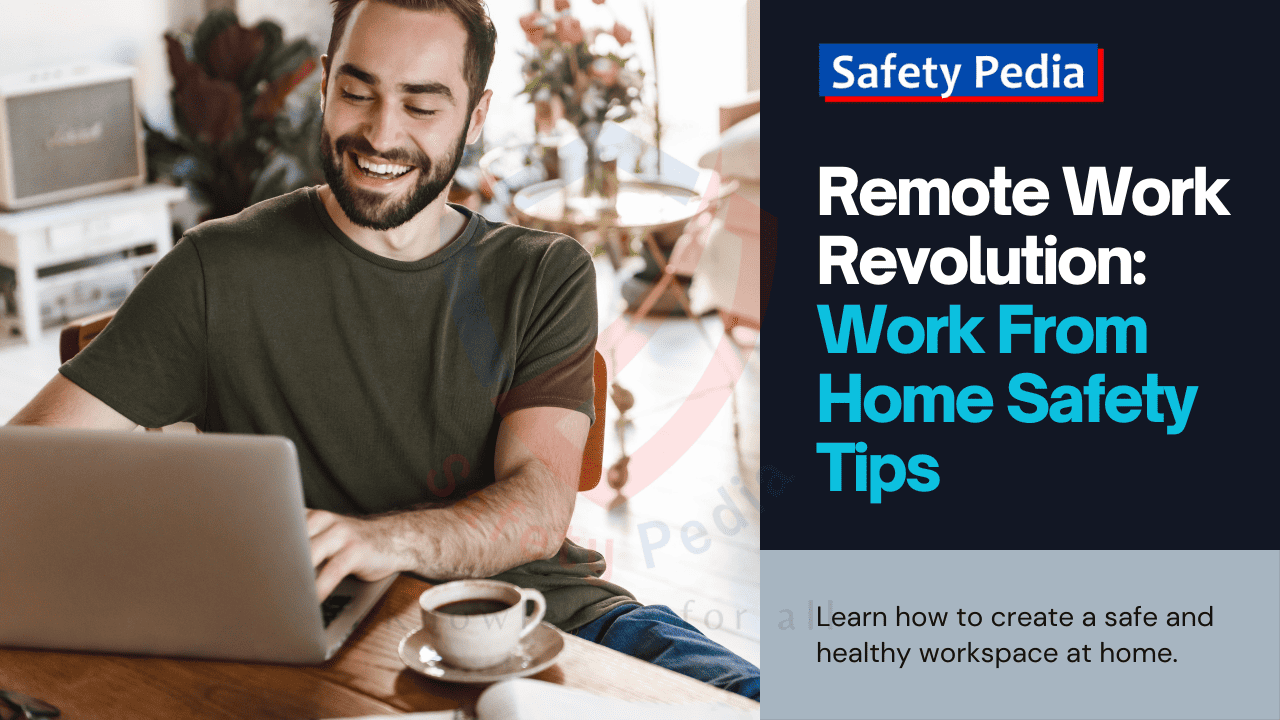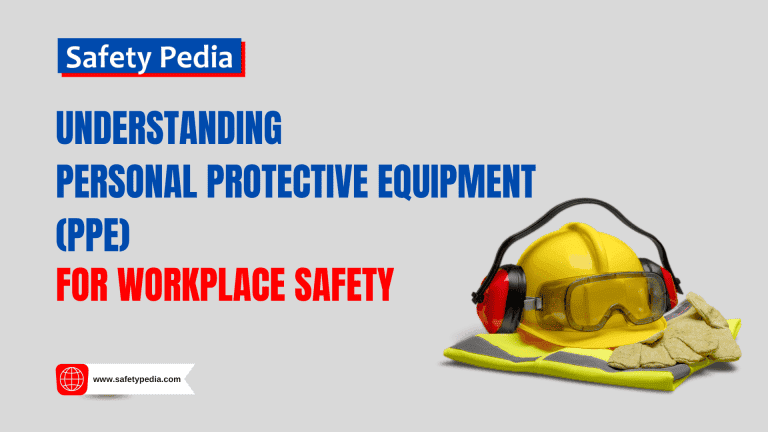
Introduction: Work From Home Safety Tips
The pandemic has changed the way we work, and many people have adopted the benefits of working from home. However, remote work also comes with some challenges and risks that need to be addressed. In today’s digital age, more and more people are opting to work from the comfort of their homes. While it brings flexibility and convenience, it also comes with its own set of safety and security risks.
Working from home has become the new normal for many people, offering the flexibility and comfort that traditional office spaces may lack. However, with this shift comes the need to ensure the safety of both our physical space and our digital workspace. Whether you’re a freelancer, a remote employee, or a business owner, it’s important to take steps to protect yourself, your family, and your digital workspace.
Additionally, we’ll get through the importance of maintaining a healthy work-life balance, setting boundaries, and creating a productive working environment.
This article will provide you with essential tips and practices to ensure work-from-home safety. By implementing these essential tips, you can ensure that your work-from-home experience is not only efficient but also safe and secure. Don’t wait – start protecting your home and digital workspace today!
Maintaining mental and physical well-being while working from home
When working from home, it’s crucial to prioritize your mental and physical well-being. Without the structure of a traditional office environment, it’s easy to fall into unhealthy habits. Here are a few tips to help you maintain a healthy work-life balance and take care of yourself:
- Establish a routine: Set a schedule that includes dedicated time for work, breaks, and personal activities. Stick to this routine as much as possible to create a sense of structure and normalcy.
- Create a designated workspace: Designate a specific area in your home as your workspace. This will help you separate your professional and personal life and improve focus and productivity.
- Establish a routine and boundaries: Working from home can blur the lines between work and personal life, which can affect your mental health and productivity. To prevent this, create a schedule that works for you and stick to it. Set clear start and end times for your workday, and take breaks in between. Communicate your availability and expectations with your colleagues, clients, and family members. Respect your boundaries and don’t let work interfere with your time.
- Take regular breaks: Just like you would in an office setting, take regular breaks to clear your mind and refresh your energy. Step away from your workspace, stretch, or engage in activities that help you relax and recharge.
Maintaining your mental and physical well-being is essential for long-term work-from-home success. By prioritizing self-care, you can ensure that you stay healthy, productive, and motivated.
Physical safety tips for your home workspace
Creating a safe physical environment in your home office is essential to prevent mishaps and ensure your well-being. Keep your workspace clutter-free and organized to avoid tripping hazards. Use surge protectors for your electronic devices to protect them from power surges. If you have children or pets, consider using cable management solutions to keep cords out of reach.
Install smoke detectors and fire extinguishers in your home office and test them regularly. Keep a first aid kit handy in case of minor injuries. If possible, install a security system or use smart locks to enhance the security of your home. Consider having a designated area for confidential documents and invest in a shredder to dispose of sensitive information properly.
Here are some important tips to ensure the physical safety of your home workspace:
- Ensure proper lighting: Good lighting is essential for reducing eye strain and increasing productivity. Position your workspace near a window for natural light or invest in bright, adjustable desk lamps.
- Keep walkways clear: Remove any potential tripping hazards such as loose cables or clutter from your workspace. A clear and organized area will help prevent accidents and injuries.
- Designate a Workspace: Select a specific area in your home to use as a workspace, ideally away from distractions and household activities.
- Ergonomic Furniture: Invest in an ergonomic chair that supports your back and allows your feet to rest flat on the floor. Your hips and knees should be at a 90-degree angle or slightly greater.
- Proper Lighting: Ensure your workspace is well-lit to reduce eye strain. Position screens to minimize glare and use task lighting if necessary.
- Monitor and Keyboard Placement: Place your monitor at arm’s length with the top of the screen at or just below eye level. Use a separate keyboard and mouse to maintain a neutral wrist position.
- Clutter-Free Environment: Keep your workspace free of clutter. Secure cables and cords to prevent tripping hazards.
- Regular Breaks: Take short breaks every hour to stretch and move around, which can help prevent muscle stiffness and fatigue.
- Safe Flooring: Ensure that the floor around your workspace is level, dry, and free of any tripping hazards like loose carpets or electrical cords.
- Noise Control: If possible, choose a quiet area or use noise-canceling headphones to minimize auditory distractions.
- Privacy: Make sure your workspace is private enough for you to handle sensitive work without the risk of being overheard or interrupted.
- Fire Safety: Keep a fire extinguisher nearby and ensure that your workspace complies with fire safety regulations, including a clear path for egress.
- Electrical Safety: Use surge protectors for your electronics and ensure that electrical installations are up to code to prevent electrical hazards.
- Personal Comfort: Adjust the temperature and humidity to a comfortable level to maintain focus and productivity.
- Healthy Habits: Incorporate healthy habits such as proper hydration, eye exercises, and a balanced diet to maintain overall well-being while working from home.
Taking these physical safety measures will create a secure and comfortable workspace, reducing the risk of accidents and promoting overall well-being.
Ergonomics and physical well-being
When working from home, it’s crucial to prioritize ergonomics and physical well-being to avoid health issues that can arise from prolonged sitting and poor posture. Set up an ergonomic workstation by investing in a comfortable chair, an adjustable desk, and a monitor stand to ensure proper alignment of your body. Take regular breaks and stretch your muscles to prevent stiffness and muscle strain.
Invest in ergonomic furniture, working from home can be tempting to work from your couch or bed, but this can lead to poor posture, back pain, and eye strain. To avoid these problems, invest in a good chair, desk, and monitor that suits your height and preferences. Make sure you have enough space, lighting, and ventilation in your workspace. You can also use accessories like a keyboard, mouse, headset, and webcam to improve your comfort and communication. Consider investing in an ergonomic chair and desk to support proper posture and reduce the risk of back pain and other musculoskeletal issues.
Creating a designated workspace away from distractions like the kitchen or living room can also contribute to better focus and productivity. Keep your workspace well-lit and properly ventilated, and consider adding plants to improve air quality and create a calming atmosphere. Taking care of the following suggestions can optimize your work-from-home experience and your physical well-being.
- Chair Selection: Choose a chair that supports the natural “S” curve of your back. The Steelcase Gesture is highly recommended for its adjustability and lumbar support.
- Desk Height: Ensure that your desk is at a height that allows your arms to rest comfortably, preventing strain on your shoulders and wrists.
- Monitor Position: Position your computer monitor at eye level to avoid neck strain. The top of the screen should be at or slightly below eye level.
- Keyboard and Mouse Placement: Keep your keyboard and mouse within easy reach and on the same surface. Your wrists should be in a neutral position, not bent up or down.
- Lighting: Set up your workspace with plenty of light, but avoid glare on your computer screen. Natural light is best, but if that’s not possible, use a combination of general and task lighting.
- Take Breaks: Remember to take short breaks every hour to stretch and move around, which can help prevent muscle fatigue and strain.
- Workspace Customization: Customize your workspace to fit your body’s natural posture and movements for comfort and efficiency.
- Ergonomic Accessories: Consider using ergonomic accessories like a footrest, a standing desk, or a monitor stand to enhance your workspace’s ergonomics.
- Professional Advice: Consult with an ergonomics expert or occupational therapist to get personalized recommendations for your home workspace setup.
- Continuous Adjustment: Regularly assess and adjust your workspace as needed. Ergonomics is not a one-time setup but an ongoing process to ensure physical well-being.
Working From Home Security Tips
Working from home can be a rewarding and flexible way of working if you follow some safety tips. By setting up a suitable workspace, establishing a routine and boundaries, securing your devices and data, staying connected with your team, and taking care of your health, you can enjoy the remote work revolution without compromising your safety or productivity.
Working from home has become the new norm for many, but with the convenience of a home office comes the responsibility of ensuring a secure work environment. Here are some essential security tips to help you protect sensitive information and maintain a robust defense against potential cyber threats.
- Choose a Secure Workspace: Selecting a private workspace is crucial. Avoid areas where onlookers can easily view your screen, known as “shoulder surfing.” If privacy is a concern, consider using a privacy filter for your screen.
- Secure Your Devices: Always lock your devices when not in use. For Windows, use the shortcut ‘Windows logo key + L’, and for Mac, ‘Control + Command + Q’. This prevents unauthorized access to your work.
- Wi-Fi Security: Ensure your home Wi-Fi is encrypted with WPA-2 or WPA-3. Avoid using public Wi-Fi for work-related tasks. If remote resources are necessary, use a VPN to create a secure connection to your office network.
- Strong Authentication: Implement strong authentication methods for device access, such as Windows Hello, PINs, fingerprint scans, or facial recognition. Use multi-factor authentication (MFA) for accessing cloud-based resources to add an extra layer of security.
- Update Regularly: Keep your security software, operating system, and other critical software up to date. Regular updates often include patches for security vulnerabilities.
- Physical Security: Treat your home office like your regular office. Secure your home router by changing the default password to something unique and complex. Lock doors or take your devices with you when leaving your workspace, even if it’s just for a short break.
- Data Management: Be mindful of how you store and dispose of sensitive data. Use encrypted storage solutions and follow proper protocols for disposing of data that is no longer needed.
- Adherence to Company Policies: Follow your employer’s safety, security, health practices and guidelines. These are designed to protect both the company’s and your personal information.
By implementing these security measures, you can create a safer remote working environment that protects both personal and company data. For more detailed information and additional tips, check out resources provided by cybersecurity experts. Stay safe and secure while enjoying the flexibility of working from home.
Remember, security is not just about technology; it’s also about awareness and behavior. Stay vigilant and informed to keep your digital workspace as secure as your physical one.

Cybersecurity tips for protecting your digital workspace
Securing your digital workspace is just as important as protecting your physical space. Start by using strong, unique passwords for all your online accounts, and consider using a password manager to keep track of them. Enable two-factor authentication whenever possible to add an extra layer of security.
Invest in reliable antivirus software and keep it up to date to protect your devices from malware and viruses. Regularly update your operating system and applications to ensure you have the latest security patches. Be cautious when downloading files or clicking on links, as phishing scams and malware attacks are common. Always verify the source and validity of emails, especially those requesting sensitive information.
Encrypt your Wi-Fi network to prevent unauthorized access, and use a virtual private network (VPN) when connecting to public Wi-Fi networks. Back up your important files and documents regularly to an external hard drive or cloud storage to protect against data loss. By implementing these cybersecurity measures, you can safeguard your digital workspace from potential threats.
Avoiding Phishing Scams And Malware Attacks
Phishing scams and malware attacks are prevalent in today’s digital landscape. It’s crucial to educate yourself on how to recognize and avoid falling victim to these threats. Be cautious of unsolicited emails, especially those requesting personal information or payment details. Look out for spelling mistakes, grammatical errors, and suspicious email addresses.
Avoid clicking on links or downloading attachments from unfamiliar sources. Hover over links to verify their authenticity before clicking. Be wary of pop-up ads and avoid downloading software from untrustworthy websites. Regularly educate yourself on the latest phishing techniques and malware trends to stay informed and protected.
Educating yourself on phishing scams and other online threats
Staying informed about the latest phishing scams and other online threats is key to protecting your digital workspace. Follow reputable cybersecurity blogs and news outlets to stay up to date with the latest trends. Participate in online forums or webinars to learn from experts in the field.
Consider taking online courses or certifications in cybersecurity to enhance your knowledge and skills. By educating yourself and staying informed, you can better identify potential threats and take appropriate measures to protect your digital assets.
Setting boundaries and maintaining work-life balance
One of the challenges of working from home is maintaining a healthy work-life balance. Without clear boundaries, it can be easy to blur the lines between work and personal life, leading to burnout and decreased productivity. Establish a routine and set designated working hours to create structure in your day.
Communicate your boundaries with family members or housemates, making it clear when you should not be disturbed. Take regular breaks and make time for activities outside of work to recharge. Find ways to separate your workspace from your living space, such as closing the door to your home office or using a room divider.
- Create a Dedicated Workspace: Set up a specific area in your home for work. This helps physically separate work from personal life and promotes better focus.
- Establish Clear Working Hours: Define your start and end times for work and communicate these boundaries to colleagues and family members.
- Take Scheduled Breaks: Incorporate regular breaks into your day, such as a lunch hour or short intervals to stretch and refresh, to avoid burnout.
- Set Digital Boundaries: Turn off work-related notifications outside of working hours to prevent constant connectivity from intruding on personal time.
- Prioritize Tasks and Avoid Overcommitment: Use a task management tool to organize your workload and avoid taking on more than you can handle.
- Communicate Boundaries with Your Team: Let your colleagues and supervisors know when you’re available and when you’re offline to manage expectations effectively.
- Dress for Work: Dressing professionally, even at home, helps mentally prepare for the workday and sets a psychological boundary.
- Practice Time Blocking: Allocate specific times for work tasks, household responsibilities, and personal activities to ensure balance.
- Avoid Working in Personal Spaces: Keep your bedroom or relaxation zones free from work activities to maintain their purpose as areas of rest.
- Log Off at the End of the Day: Develop a “log-off ritual,” such as shutting down your computer or going for a short walk, to signal the end of the workday.
- Set Limits on After-Hours Communication: Unless it’s urgent, avoid responding to emails or messages after your designated work hours.
- Take Advantage of Flexibility Wisely: Use the flexibility of remote work to schedule personal appointments or errands without compromising productivity.
- Focus on Quality Over Quantity: Aim for efficiency and effectiveness during work hours rather than overextending yourself.
- Maintain Social Connections: Engage with friends, family, or colleagues outside of work to preserve a sense of community and reduce feelings of isolation.
- Practice Self-Care: Dedicate time for activities that recharge you, such as exercise, hobbies, or meditation, to maintain mental and physical well-being.
- Set Boundaries for Family Members: Educate family members about your work schedule and create signals, such as a closed door, to indicate when you’re unavailable.
- Limit Distractions: Identify potential distractions and implement solutions, like noise-canceling headphones or a “Do Not Disturb” sign, to stay focused.
- Evaluate and Adjust Regularly: Periodically assess your work-life balance and adjust your strategies as needed to accommodate changing circumstances.
By implementing these strategies, you can establish clear boundaries and maintain a healthy work-life balance, ensuring productivity and personal well-being while working from home.
Creating a safe digital workspace

Creating a safe digital workspace involves organizing your files and documents, securing your devices, and regularly backing up your data. Keep your files organized and use proper file naming conventions to easily locate and access important documents. Use cloud storage or external hard drives to regularly back up your files to prevent data loss.
Secure your devices by enabling biometric authentication or strong passwords. Encrypt sensitive files and folders for an added layer of security. Consider using a password manager to securely store your passwords and avoid using the same password across multiple accounts.
Regularly update your software, including operating systems and applications, to ensure you have the latest security patches. Install reputable antivirus software and perform regular scans to detect and remove any malware or viruses. By following these practices, you can create a safe digital workspace.
Conclusion: Adopting a safe and productive work-from-home environment
Working from home offers numerous benefits but also requires taking proactive steps to ensure safety and security. By prioritizing ergonomics and physical well-being, implementing cybersecurity measures, and setting boundaries, you can create a safe and productive work-from-home environment.
Remember to educate yourself on phishing scams and other online threats, and regularly update your knowledge to stay ahead of potential risks. By maintaining a healthy work-life balance and creating a safe digital workspace, you can embrace the advantages of working from home while minimizing potential risks.
Don’t wait – start protecting your home and digital workspace today!
References:
https://www.tdi.texas.gov/tips/safety/remotework.html
Your one click can make a difference
Keep sharing and promoting health and safety awareness!
Related posts:

The Consequences of Poor Safety Performance: Risks You Can’t Afford to Ignore
Discover the potential consequences of poor safety performance in the workplace and how they can negatively impact both employees and the company as a whole.

18 Common Challenges in Improving Safety Performance at Work
Discover 18 common challenges in improving safety performance at work. Learn how to overcome these obstacles for a safer workplace.

20 Best Ways to Improve Safety Performance in the Workplace
Discover the 20 best ways to improve safety performance at workplace, including actionable strategies for hazard prevention, employee engagement, safety training, and cultivating a culture of well-being.
Join Our Safety Community!
Stay informed with the latest tips and insights on occupational health, safety, and the environment.






